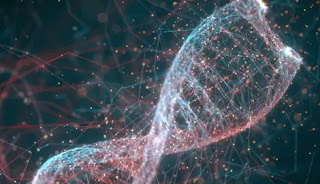"‘Pseudogene’ means ‘false gene’. Scientists coined the term for the many things they were finding that looked like protein-coding genes but were not used to make proteins. In the evolutionary mind, a pseudogene is a broken gene which once coded for a protein. Supposedly, mutations, i.e. copying mistakes, crippled the gene at some time in the past. Thus, a pseudogene was considered to be aform of ‘junk’ DNA.
Humans, chimpanzees, and gorillas share some pseudogenes. Treating them as errors, evolutionists have argued that they must have come from a common ancestor. They say it is unreasonable to believe that the same mistake arose independently in each by chance, or that God intentionally created the same purposeless genes in humans and non-human primates.
However, are pseudogenes actually useless, i.e. junk DNA?
If they are not mistakes,
but are functional,
then the whole ‘shared mistakes’ argument collapses.
The pseudogene argument is like the ‘vestigial organ’ argument repeatedly employed in the past. It was once claimed that the human body is filled with many functionless organs, which are useless leftovers from our evolutionary history.
Like the vestigial organ argument, junk DNA is an argument from silence, a classic logical fallacy; because we don’t know what something does doesn’t mean it does nothing.
Nearly all the genome has been demonstrated to be functional. For one thing, the ENCODE project found that at least 90% of human DNA is transcribed into RNA. Therefore, it is doing something. Such RNA can, for example, land on matching DNA strands and prevent a gene from being read. This is but one way the cell controls gene expression (i.e., how much of a particular protein is produced).
Significant discoveries have been made concerning the pseudogenes in humans and primates. One thing is that the same pseudogenes in different species are far more similar than would be expected if they were useless. For example, the β-globin pseudogenes in humans and chimpanzees are nearly identical. Mutations in a useless gene would not be subject to natural selection, because they would not affect survival and therefore reproduction. Thus, a functionless gene would be free to mutate.
Q: Why are so few mutations seen in these pseudogenes if they are useless?
---In other words, the high degree of similarity of the pseudogenes suggests that they have a function, and that this has a strong effect on survival. If the pseudogenes had been free to mutate, they would have done so many times, especially on an evolutionary timescale.
The evolutionary story about β-globin pseudogenes was therefore already in doubt.6,7 But work published in 2021 shows they indeed have a function. They play a vital role in the production of red blood cells (erythropoiesis).
The authors demonstrated that the HBP1 pseudogene is essential for this, and that this is done “by binding the RNA-binding protein (RBP), HNRNPA1, to upregulate TAL1, a key regulator of erythropoiesis.”
Obviously, such pseudogenes are not useless evolutionary relics.
This destroys the pseudogene argument. Pseudogenes are not examples of junk DNA that humans, chimps, and gorillas share because of a common ancestor. Pseudogenes are an example of common design—God using the same design or blueprint in multiple organisms.
As with the entire ‘junk DNA’ argument, this is just one more case of evolution hindering scientific progress. The assumption that pseudogenes were useless evolutionary leftovers hampered research into their functions." CMI
---In other words, the high degree of similarity of the pseudogenes suggests that they have a function, and that this has a strong effect on survival. If the pseudogenes had been free to mutate, they would have done so many times, especially on an evolutionary timescale.
The evolutionary story about β-globin pseudogenes was therefore already in doubt.6,7 But work published in 2021 shows they indeed have a function. They play a vital role in the production of red blood cells (erythropoiesis).
The authors demonstrated that the HBP1 pseudogene is essential for this, and that this is done “by binding the RNA-binding protein (RBP), HNRNPA1, to upregulate TAL1, a key regulator of erythropoiesis.”
Obviously, such pseudogenes are not useless evolutionary relics.
This destroys the pseudogene argument. Pseudogenes are not examples of junk DNA that humans, chimps, and gorillas share because of a common ancestor. Pseudogenes are an example of common design—God using the same design or blueprint in multiple organisms.
As with the entire ‘junk DNA’ argument, this is just one more case of evolution hindering scientific progress. The assumption that pseudogenes were useless evolutionary leftovers hampered research into their functions." CMI


